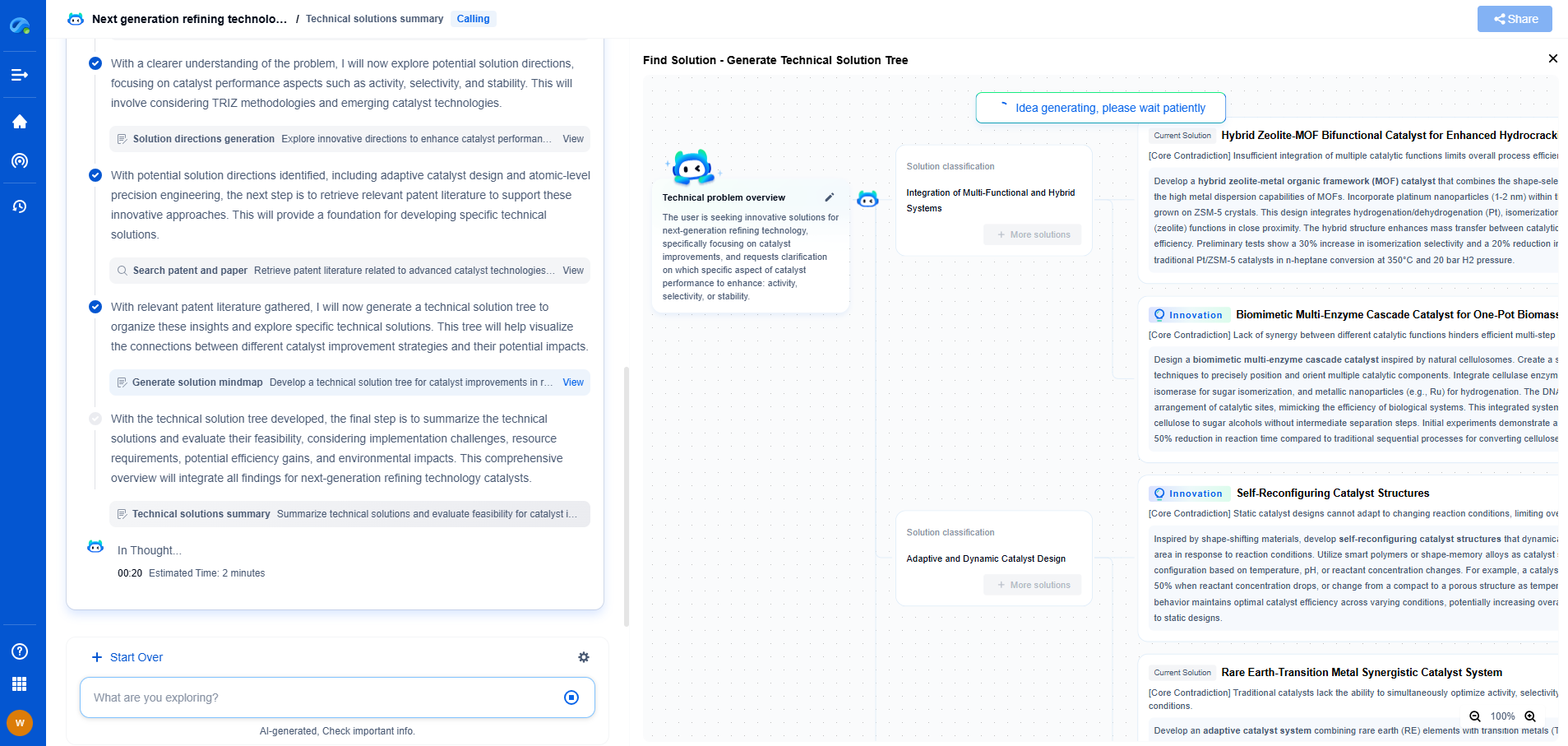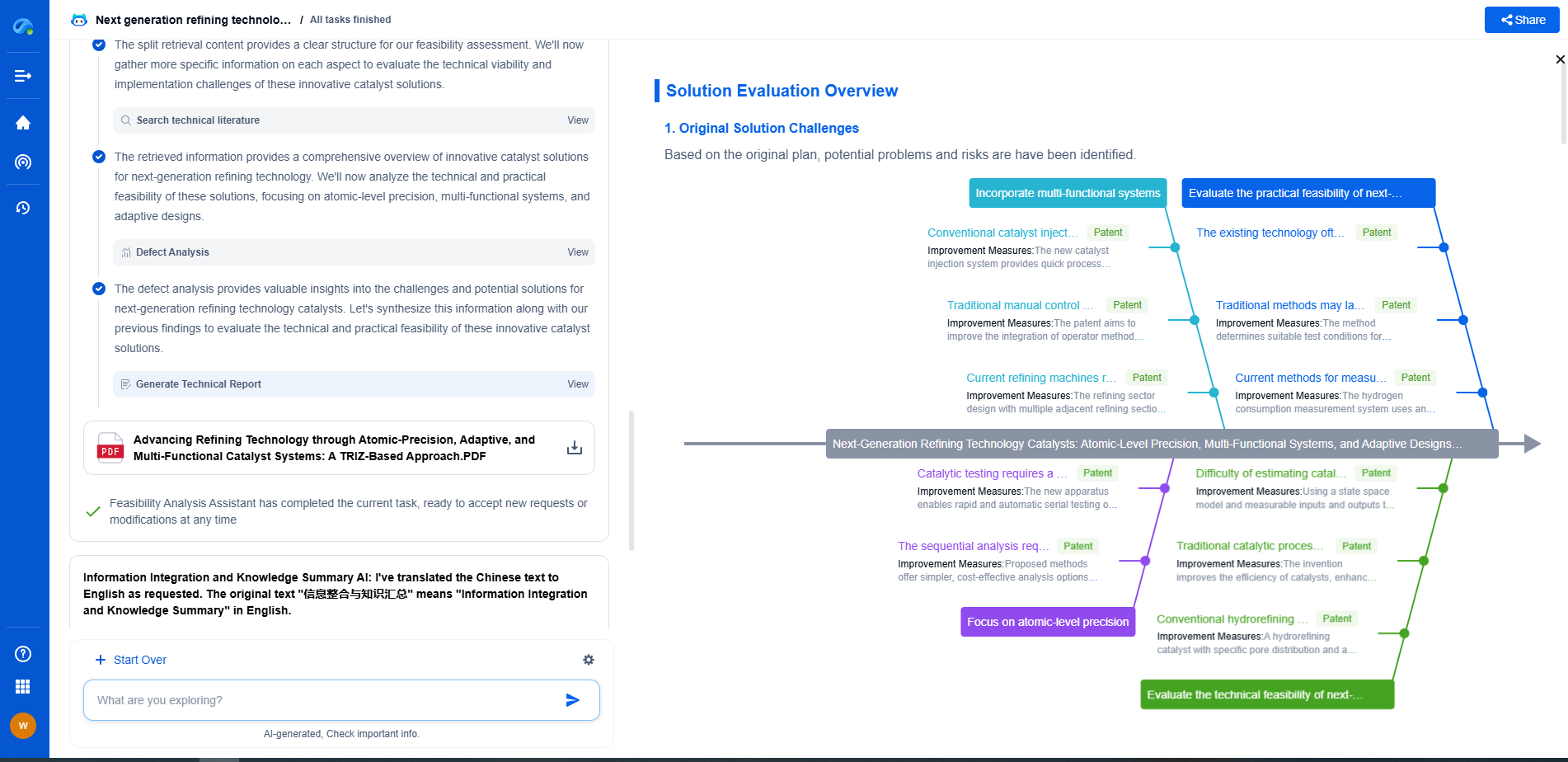Why Does Turbine Yaw Misalignment Reduce Efficiency?
JUN 26, 2025 |
In the quest for optimizing wind energy generation, achieving precise alignment of the wind turbine with the wind direction is paramount. This alignment is known as yaw alignment, and any deviation from it, referred to as yaw misalignment, can significantly impact the efficiency of a wind turbine. To understand why this misalignment is detrimental, it is essential to delve into the dynamics of wind flow and turbine operation.
The Role of Yaw Alignment in Energy Capture
Yaw alignment is the process of orienting the wind turbine rotor perpendicular to the prevailing wind direction. This alignment ensures that the maximum amount of wind energy is captured by the rotor blades, which subsequently convert the kinetic energy of the wind into electrical energy. The efficiency of energy capture is directly related to how accurately the rotor is aligned with the wind.
When a turbine experiences yaw misalignment, the rotor is not perfectly perpendicular to the wind direction. This causes a portion of the wind to pass around the rotor instead of through it, decreasing the turbine's ability to capture energy. As a result, even small yaw misalignments can lead to significant reductions in energy output and, consequently, overall efficiency.
Impact on Aerodynamic Performance
The aerodynamic performance of a wind turbine is intricately linked to its alignment with the wind. Yaw misalignment alters the angle of attack on the rotor blades, affecting lift and drag forces. Ideally, the blades are designed to operate at specific angles that maximize lift and minimize drag. When misaligned, these angles are thrown off, leading to suboptimal aerodynamic performance.
This suboptimal performance means that the rotor blades cannot extract energy from the wind as efficiently as intended. Consequently, the turbine produces less power than its rated capacity, which can have significant economic implications, especially for large wind farms where maximizing output is crucial.
Increased Mechanical Stress and Maintenance Costs
Yaw misalignment not only affects energy capture but also increases mechanical stress on the turbine components. The uneven distribution of aerodynamic forces caused by misalignment can lead to increased wear and tear on the rotor blades, bearings, and other structural components. Over time, this can result in more frequent maintenance requirements and higher operational costs.
Additionally, prolonged exposure to yaw misalignment can shorten the lifespan of various turbine components, leading to unexpected downtimes and higher costs associated with repairs or replacements. Therefore, maintaining proper yaw alignment is not only about energy efficiency but also about operational reliability and cost-effectiveness.
Yaw Correction and Technological Solutions
To mitigate the impact of yaw misalignment, modern wind turbines are equipped with yaw control systems. These systems use sensors to monitor wind direction and automatically adjust the orientation of the turbine to align with the wind. Advanced algorithms and control mechanisms are employed to ensure that adjustments are made swiftly and accurately.
However, even with sophisticated yaw control systems, some degree of misalignment is inevitable due to the complex and dynamic nature of wind patterns. Continuous research and development in this area aim to improve the precision and responsiveness of yaw control systems, thereby enhancing turbine efficiency and reliability.
Conclusion
Yaw misalignment is a critical factor that can significantly reduce the efficiency of wind turbines by impacting energy capture and increasing mechanical stress. Understanding the importance of yaw alignment and employing effective yaw control systems are essential strategies for optimizing wind energy generation. As technology continues to advance, the industry strives for better solutions to minimize the effects of yaw misalignment and maximize the potential of renewable wind energy. By addressing these challenges, the wind energy sector can ensure more reliable, cost-effective, and sustainable energy production for the future.
Empower Your Wind Power Innovation with AI
In the fast-evolving landscape of wind turbine technology—where aerodynamic optimization, generator efficiency, and structural innovation are critical—staying ahead requires more than just expertise. It requires intelligent tools that accelerate R&D and protect your competitive edge.
Patsnap Eureka is your AI-powered research assistant, designed specifically for innovators like you working at the forefront of Wind Motors. Whether you're analyzing blade design trends, exploring novel gearbox architectures, or navigating complex global patent landscapes, Eureka streamlines the entire process with precision and speed.
👉 Experience how Patsnap Eureka can revolutionize your R&D and IP strategy. Request a demo today and power up your next breakthrough.
- R&D
- Intellectual Property
- Life Sciences
- Materials
- Tech Scout
- Unparalleled Data Quality
- Higher Quality Content
- 60% Fewer Hallucinations
Browse by: Latest US Patents, China's latest patents, Technical Efficacy Thesaurus, Application Domain, Technology Topic, Popular Technical Reports.
© 2025 PatSnap. All rights reserved.Legal|Privacy policy|Modern Slavery Act Transparency Statement|Sitemap|About US| Contact US: help@patsnap.com

